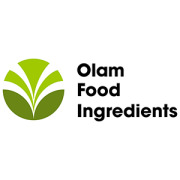News
Premium chocolate gets a sustainable innovation boost
25 Oct 2019Unusual ingredients and eco-friendly approaches to NPD have boosted the premium chocolate sector, which continues to grow rapidly while innovation in other chocolate categories has slowed.
Dark chocolate increased its share of new launches in the European market from 25% in 2014 to 35% in 2018, reflecting changing consumer habits, according to Innova Market Insights. Meanwhile, new milk chocolate products saw their share slip from 71% to 59%. The market researcher found premium flavours and inclusions were also on the rise.

Consumer attitudes to chocolate have shifted dramatically over the past few years. A growing number of studies suggest that dark chocolate has potential health benefits, and consumers have been easy to convince that a daily chocolate habit could be beneficial. At the same time, many have become interested in high quality chocolate for its purported health effects as well as for its flavour, including single origin varieties and varieties with high cocoa content.
This focus on the cocoa itself has led some European consumers to push the boundaries of responsible cocoa sourcing, as the environmental and social challenges linked with chocolate increasingly have made headlines. For some consumers, recycled and/or recyclable packaging is of the utmost importance, while others are concerned about ethical issues or water use.
Manufacturers have been pushing boundaries too, with a range of cocoa sustainability initiatives, such as the Cocoa & Forests Initiative and CocoaAction, which count big names in cocoa like Barry Callebaut, Cargill and Olam among their signatories, as well as many major global chocolate manufacturers. In many cases companies have been looking for ways to overlap such initiatives with consumer demand for sustainable chocolate. Barry Callebaut, for instance, recently introduced its WholeFruit chocolate in the United States, which it claims is the first variety to use the entire cacao fruit, rather than just the beans, resulting in a fruitier flavour, higher protein content, and less waste – a win-win for the company and the health-conscious, environmentally minded consumer.
Premium chocolate brands also seem a good fit for unusual inclusions, such as superfruits, botanicals and seeds. Mainstream brands have been combining dark chocolate with traditionally savoury ingredients like chilli or sea salt for years, and Nestlé’s everyday chocolate brand KitKat recently has gone premium in Japan with varieties that include matcha and ruby chocolate from Barry Callebaut. Inclusions also help deliver a textural experience, which is a priority for many consumers when choosing chocolate. According to Mintel, Europe has the largest share of global food and drink launches with descriptions of texture, including unexpected texture combinations, such as crispy and smooth, or crunchy and soft.
The International Cocoa Organization says demand for premium cocoa and chocolate also has led to rapid growth for organic and Fair Trade products, as consumers have become increasingly aware of the ethics, environmental concerns and human rights issues associated with cocoa production. And this element may carry an unexpected bonus for manufacturers: French researchers have found that ethical claims like Fair Trade lead consumers to perceive foods as healthier and lower in calories, thereby resulting in greater consumption.



